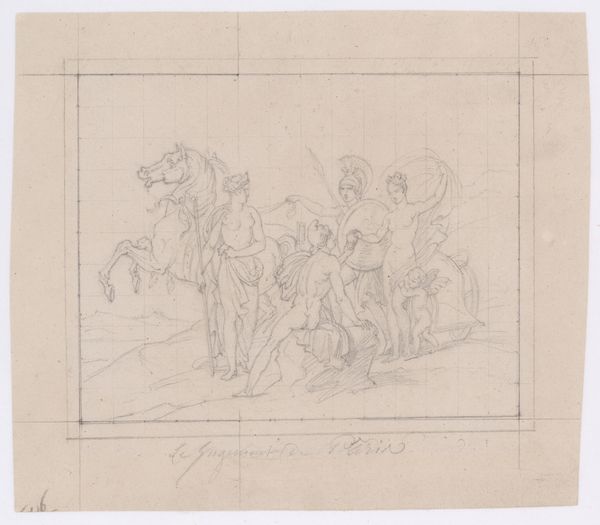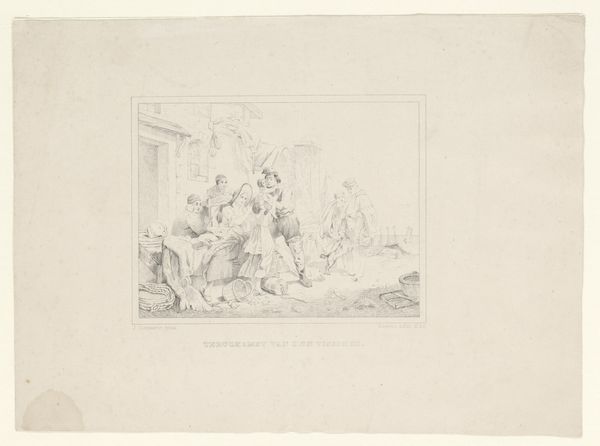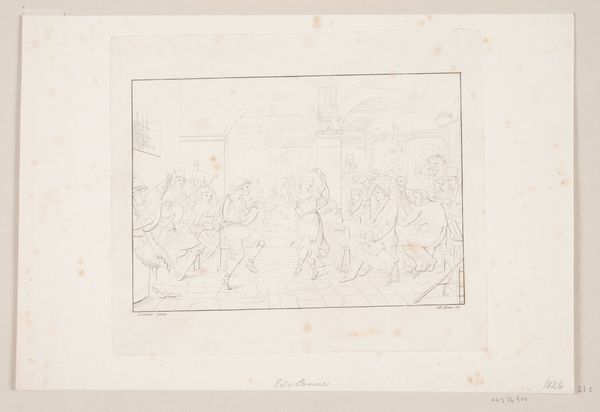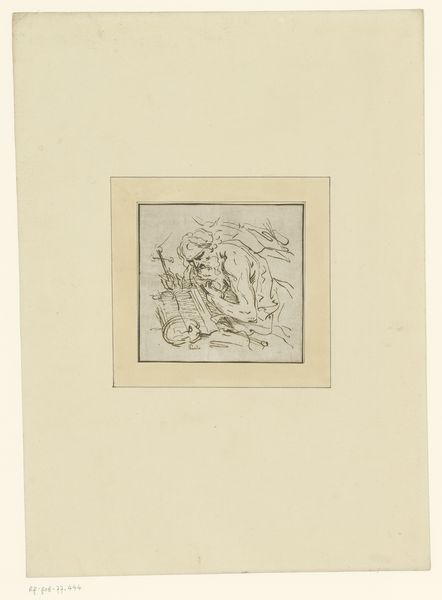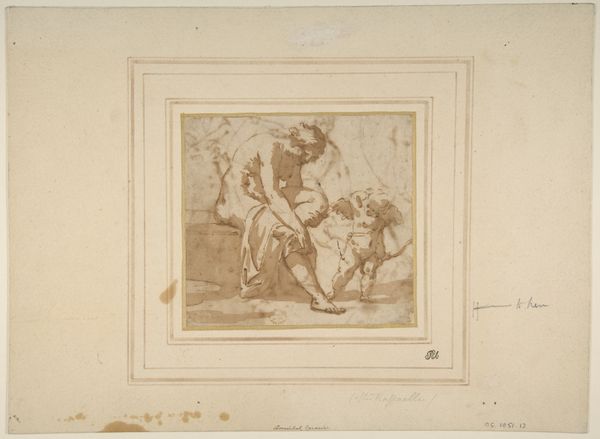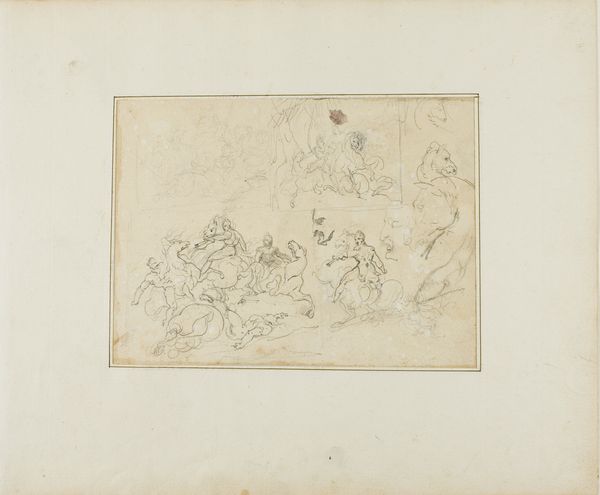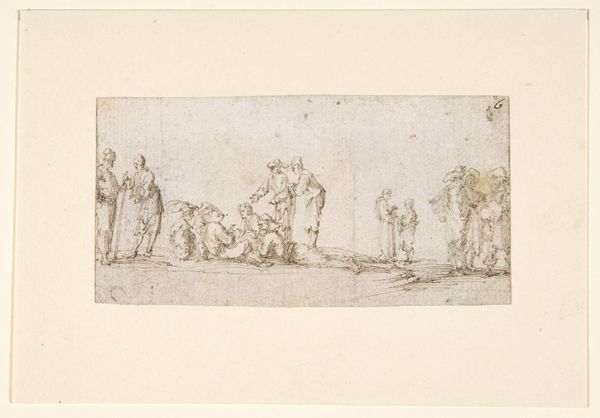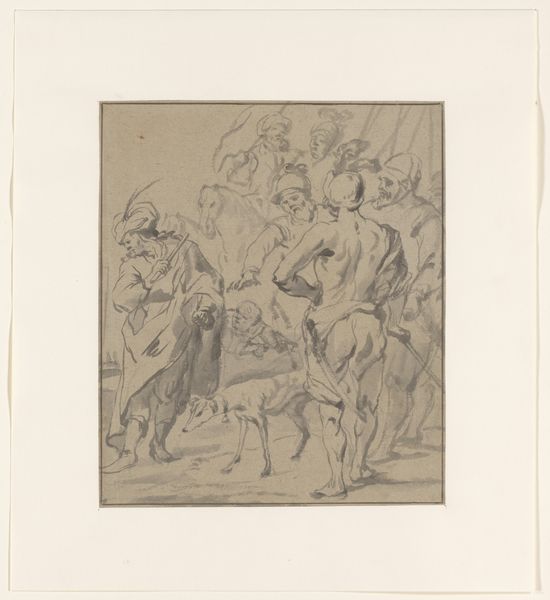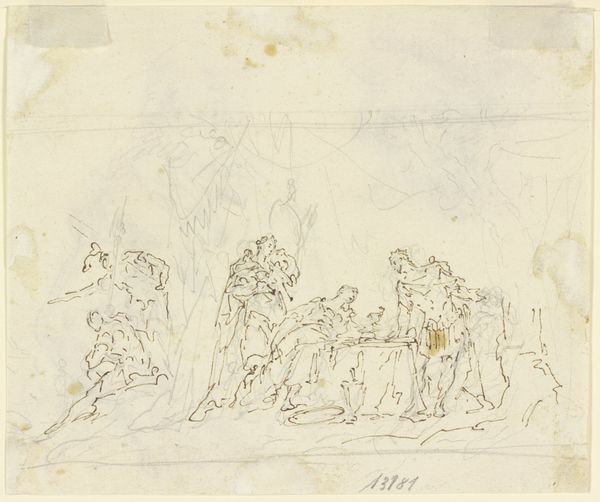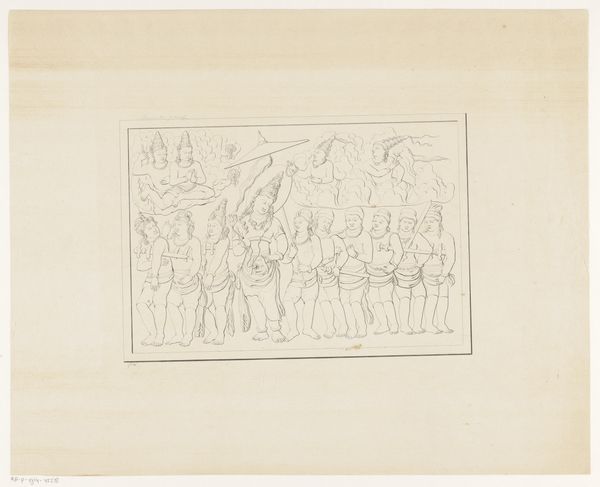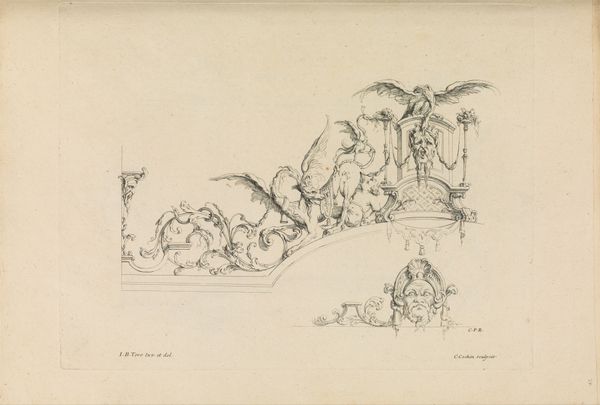
drawing, print, paper, pencil, graphite
#
drawing
#
animal
# print
#
landscape
#
etching
#
paper
#
pencil
#
graphite
#
genre-painting
#
realism
Dimensions: 153 × 166 mm
Copyright: Public Domain
Curator: We're now standing in front of "Two Horses Drinking" by James Seymour. It’s an undated work rendered with graphite, pencil, and etching on paper. Editor: It feels very understated. Almost fleeting, like a quick sketch captured on the go. The two horses, one slightly overlapping the other, give off a sense of quiet intimacy. Curator: Seymour was deeply embedded in the world of 18th-century British equestrian culture. We see through his drawings and paintings of horses how the socio-economic status of their owners were affected. It provides a fascinating lens into the intersection of class and animal husbandry. He was very familiar with their physical form, their use, and even how they are valued in different economic structures. Editor: Absolutely. Consider how equine art during that time often reflected power dynamics. A regal figure atop a warhorse, that kind of thing. This is entirely different. We are viewing animals as such. There's a lack of fanfare. Their worth isn’t in labor, or social representation of class. They appear unassuming. Almost, unglamorous. It feels subversive for the time. Curator: Seymour himself came from a privileged background but experienced financial hardship later in life, which affected his artistic output. He made numerous drawings such as this. It’s an etching which made them easily reproduced. These could be sold to a wide audience rather than depending on noble clients who wanted an oil painting done, thus capturing a broader spectrum of the horse-loving public. The subject matter, two ordinary horses drinking water, suggests accessibility. Editor: The subtle blurring of forms in the background almost evokes a sense of nostalgia or even a dreamlike state, as if Seymour wasn't trying to depict these as perfect images but capturing an emotional sense of place, even memory. Curator: By looking at how popular equine artwork of the period served as a societal mirror, it encourages discourse between art history, class and gender. Who consumed such artworks? What narratives did they reinforce, and conversely, what did artworks such as "Two Horses Drinking" subvert? Editor: That makes me appreciate its simplicity so much more. Curator: Precisely, I think Seymour's etching really underscores the idea that even the most seemingly straightforward genre scenes have multifaceted depths when examined through social, cultural, and economic history.
Comments
No comments
Be the first to comment and join the conversation on the ultimate creative platform.

